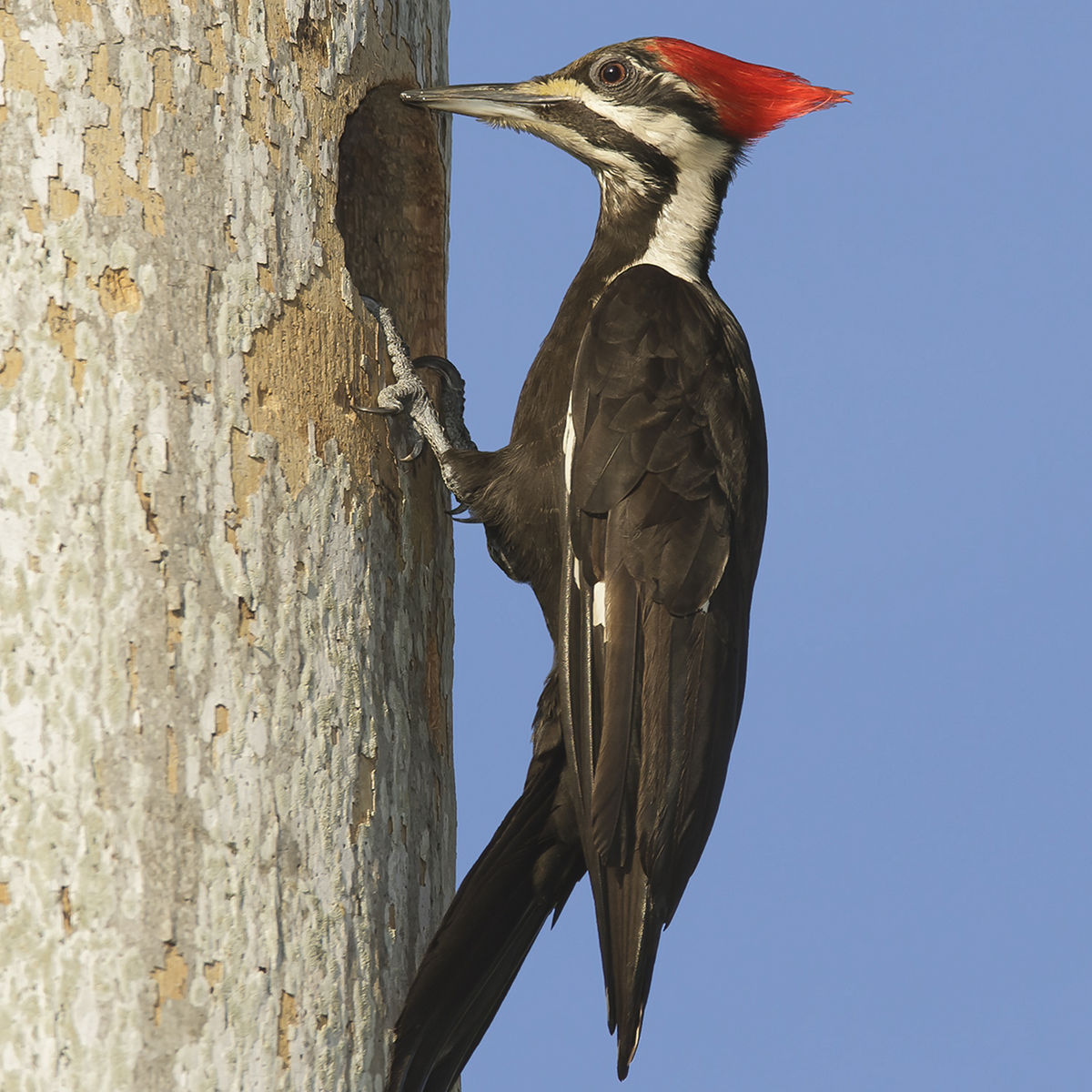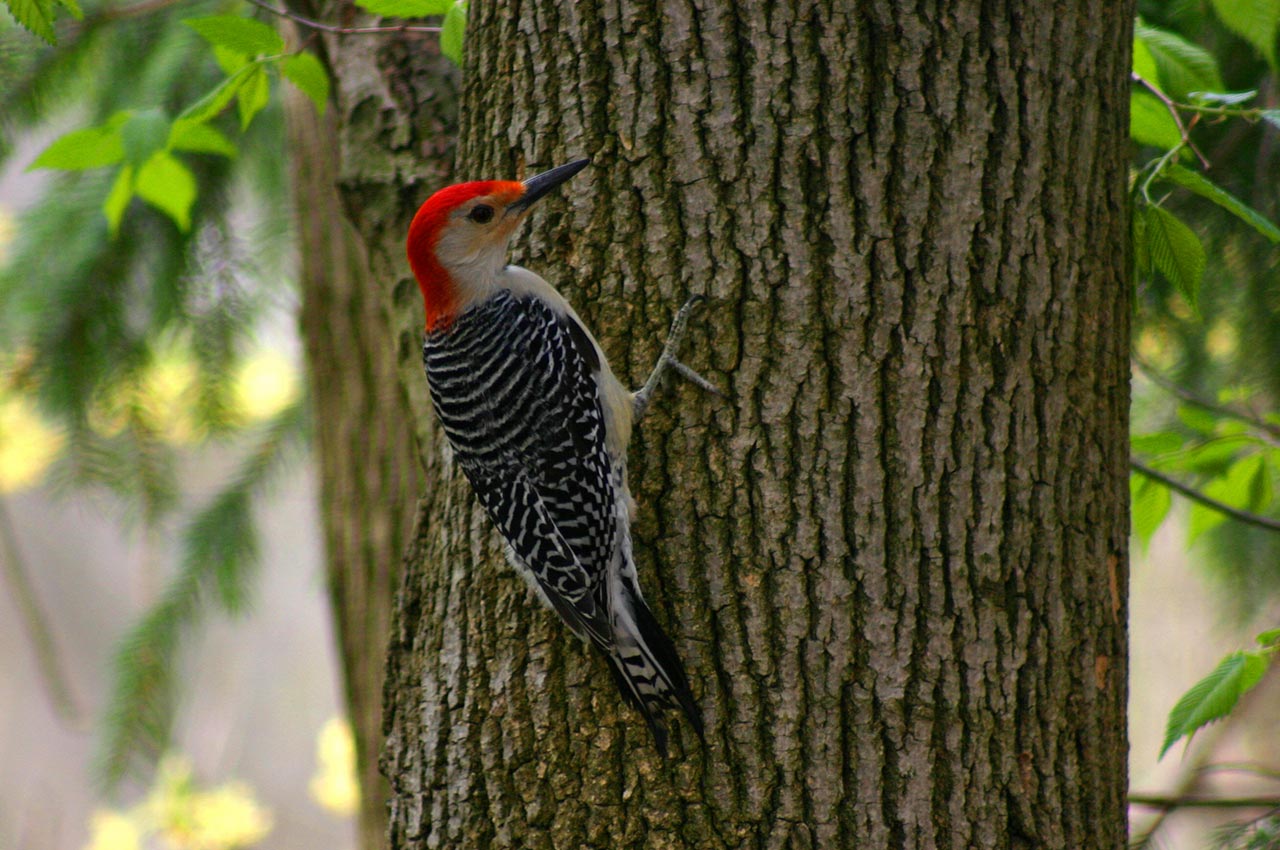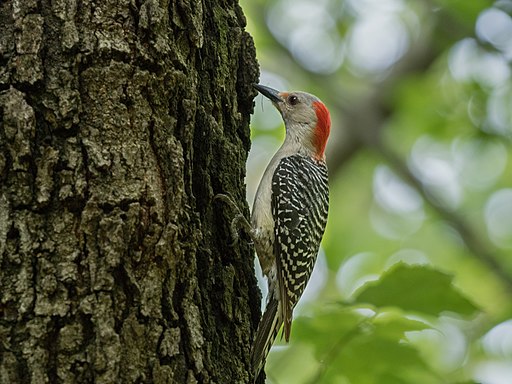Discovering Woodpeckers in Florida Habitats: Where to Find These Birds
Discovering Woodpeckers in Florida Habitats: Where to Find These Birds
Blog Article
Woodpeckers: A Comprehensive Overview to Recognizing These One-of-a-kind Birds
Woodpeckers, with their distinct behaviors and physical features, have actually long mesmerized the inquisitiveness of ornithologists and nature lovers alike. From their balanced drumming echoing via the timbers to their amazing adaptations for scaling tree trunks with ease, these birds present a remarkable study in bird biology. What genuinely sets woodpeckers apart is not just their striking appearance yet likewise their crucial duty in preserving the delicate equilibrium of environments. As we explore the elaborate anatomy, varied species, and ecological importance of woodpeckers, a much deeper admiration for these special birds and the secrets they hold unfolds.

Woodpeckers' Drumming Behavior
Woodpeckers exhibit a rhythmic and specific drumming habits that serves various necessary functions in their lives. This behavior is mainly related to communication, territory defense, and foraging. The distinct drumming audio is created by the fast pecking of their beaks against tough surface areas such as tree trunks, branches, or also steel things.
Interaction is an essential facet of woodpecker habits, and drumming plays a significant role in this procedure. Woodpeckers make use of drumming to develop their presence, draw in mates, and keep contact with their partners and offspring. The frequency, strength, and duration of drumming sequences share details messages to various other woodpeckers in the area.
Along with interaction, woodpeckers utilize drumming habits for region defense. Woodpeckers in Florida. The loud and repetitive drumming works as a cautioning to prospective intruders, signifying that the area is already claimed. By developing their region through drumming, woodpeckers reduce the chance of disputes over important sources such as food and nesting sites
Additionally, woodpeckers additionally utilize drumming as a foraging strategy. The balanced pecking helps them situate bugs concealing underneath the bark of trees by developing resonances that disrupt the target's cover-up. This behavior showcases the flexibility and resourcefulness of woodpeckers in using their drumming skills for numerous crucial purposes.
Unique Adaptations for Tree Climbing
Having actually understood the art of drumming to interact, safeguard area, and forage, woodpeckers have progressed distinct adjustments that promote their amazing climbing capabilities in their arboreal habitats. Woodpeckers have zygodactyl feet, with two toes pointing forward and two toes pointing backwards. These tail feathers give stability and equilibrium, allowing woodpeckers to maneuver up tree trunks with accuracy and agility.
In addition, woodpeckers have effective neck muscles and an unique skull framework that help in their climbing capabilities. Their strong neck muscular tissues allow them to swiftly peck at tree bark without experiencing whiplash, while their thick skull and tiny mind function as shock absorbers, protecting them from the effect of repeated drumming. These adaptations jointly make it possible for woodpeckers to navigate the upright globe of trees with efficiency and grace.

Role of Woodpeckers in Ecological Communities
Playing a crucial duty in woodland communities, woodpeckers add significantly to the equilibrium and wellness of their environments via their one-of-a-kind actions and communications with various other varieties. One of the essential eco-friendly features of woodpeckers is their duty in managing insect populaces. By foraging for insects under the bark of trees, woodpeckers help control insect populaces, avoiding episodes that might harm the general wellness of the forest. Furthermore, woodpeckers create cavities in trees that act as important nesting websites for a variety of other bird varieties, promoting Home Page biodiversity within the ecosystem.
Moreover, the drumming and vocalizations of woodpeckers play a crucial function in interaction and region facility. These sounds not only offer to attract friends however also help specify boundaries between different woodpecker territories, decreasing conflicts and advertising a harmonious coexistence within the woodland area. Generally, the visibility of woodpeckers in woodland ecosystems highlights their relevance as keystone species, influencing the dynamics and working of these environments in complex ways.
Anatomy: Specialized Beaks and Feet
In the elaborate web of forest ecological communities, the specialized beaks and feet of woodpeckers are important adjustments that enable them to accomplish their crucial environmental functions. Woodpeckers possess distinct anatomical functions that are specifically developed to aid them in their foraging and nesting habits.
One of the most distinct attribute of woodpeckers is their strong, chisel-shaped beaks. These beaks are completely adjusted for exploration right into timber to reveal pests, larvae, and sap hidden below the bark of trees. The strong muscular tissues and sturdy framework of their beaks allow woodpeckers to eat a price of approximately 20 times per secondly without creating damage to their heads.
Additionally, woodpeckers have specialized feet that help in their acrobatic climbing abilities. Their feet have 2 toes pointing onward and 2 toes pointing backwards, giving a solid grip on vertical surface areas (Woodpeckers in Florida). This special foot arrangement, along with stiff tail feathers that serve as an encouraging prop, allows woodpeckers to stick to tree trunks and branches effortlessly over here while they look for food look at this website or excavate nesting tooth cavities
Woodpecker Species Diversity
Woodpeckers are a varied group of birds found across numerous ecological communities worldwide, with over 200 known species showing adjustments to various atmospheres. Woodpeckers have actually evolved to populate an array of atmospheres, from forests and forests to grasslands and deserts, each providing unique challenges that have affected the advancement of distinct woodpecker types.
One more contributing variable to woodpecker species variety is their specialized feeding actions. Different types have actually developed to make use of various food sources, such as bugs, tree sap, fruits, and nuts, bring about the development of details adaptations in beak form, size, and toughness. These adjustments enable woodpeckers to forage successfully in their corresponding environments, reducing competition amongst species and advertising specific niche distinction. Additionally, geographical seclusion and historical variables have played a duty fit the circulation and variety of woodpecker types, causing the vast selection of specialized adjustments seen in these remarkable birds.

Verdict
In final thought, woodpeckers are fascinating birds that exhibit one-of-a-kind drumming actions, specialized adjustments for tree climbing, and play essential roles in environments. Their makeup, including specialized beaks and feet, enables them to prosper in their environment. With a varied variety of woodpecker species discovered worldwide, these birds are vital for keeping the health and equilibrium of forests and woodlands. Recognizing and appreciating the details of woodpeckers can supply valuable insights right into the natural world.
Report this page